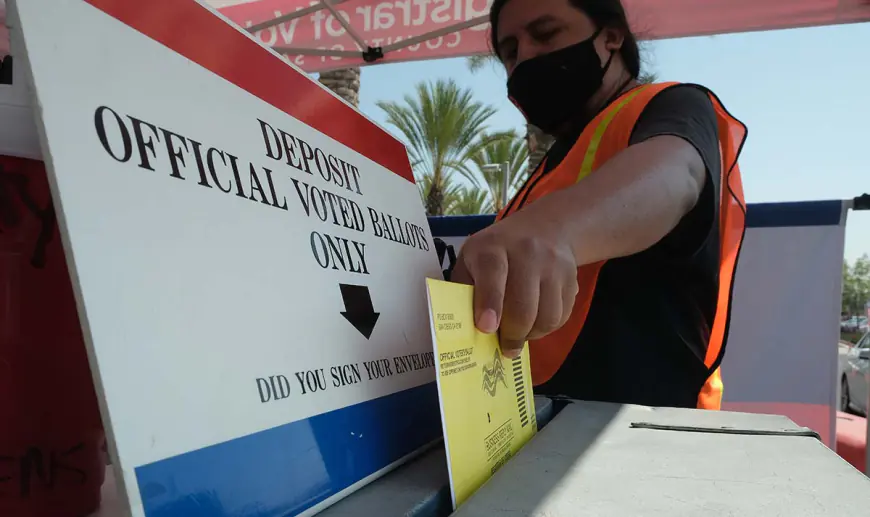Don’t Freak Out if There Isn’t a Clear Winner on Election Day
It could take days — even weeks — after the polls close before the results become clear in some races.



It’s very unlikely that Americans will know the outcome of this year’s presidential race, or even some local and state contests, on Election Day. It could take days — even weeks — after the polls close before the results become clear.
The reasons are mostly procedural. Accurate vote counting takes time, especially when it involves millions of mail-in ballots. Legal challenges, audits and recounts can also extend the period needed to determine the outcome.
Election officials caution Americans to be patient. They say what might look like delays are part of the normal process and not a sign of something nefarious. They warn that simply because a candidate declares victory does not make it true.
“You’re probably not going to have a perfect election system,” Republican Trey Grayson, a former Kentucky secretary of state and the advisory board chair of the Secure Elections Project, told the Associated Press. “But if you’re looking for one that you should have confidence in, you should feel good about that here in America.”
In 2020, it was four days after Election Day before Joe Biden was declared the winner. Even those results were unofficial, based on the projections of multiple news organizations.
But that period of uncertainty, and public confusion, opened the way for unfounded allegations of fraud. Former President Trump and his allies used what appeared to be late “changes” in the vote count to cast doubt on the legitimacy of the election.
Trump even demanded that the counting be stopped hours after the polls closed, falsely accusing Democrats of “finding” ballots to manipulate the outcome.
“We don’t want them to find any ballots at 4 o’clock in the morning and add them to the list,” he said at the time. “To me, this is a very sad moment, and we will win this, and as far as I’m concerned, we already have won it.”
But what Trump and his allies were denouncing was the normal vote-counting process. Officials had warned repeatedly that the count would take time, especially with the expanded use of mail balloting by Democrats during the pandemic. That created what has became known as a “red mirage” on Election Day, something that quickly disappeared once all the votes were tallied.
Election experts warn the same thing could happen again this year.
Ballots cast by voters on Election Day are tabulated relatively quickly, usually by machine, but even those results need to be double-checked.
Mail-in ballots can take longer to count. Each ballot must be reviewed for accuracy and to ensure that it comes from a legitimate voter. The process of removing the ballot from the envelope and preparing it to be counted, either by hand or machine, also takes time.
Some states prohibit officials from beginning this process before Election Day, all but guaranteeing that the count will be extended. That is the case this year in two battleground states, Wisconsin and Pennsylvania.
In San Diego, vote-by-mail ballots are processed as soon as they are received by the Registrar of Voters office.
There also are other factors that could lead to a longer counting period.
Most states require mail ballots to be received by Election Day. But a few states — including California — allow ballots to arrive after Election Day, as long they are postmarked by that date. Many states provide a similar grace period for military and overseas ballots.
In San Diego County, mail ballots have to be received no later than seven days following the election in order to count.
Voters who cast provisional ballots, often because they lack the required ID or their names are missing from the rolls, are also allowed several days after Election Day to address those problems.
In addition, some states give voters a few days to “cure” or fix errors on their mail ballots so they can be counted. In a close race, this can make a difference.
Election experts offer another word of caution: Even when enough votes have been counted to allow media outlets to project a winner, those results are not final. They still need to be certified by election officials, a process that usually occurs several weeks after Election Day when canvassing and audits are complete.
The certification deadline in California is Dec. 13, with results posted at sos.ca.gov/elections.
Close races can also trigger automatic or candidate-requested recounts or attract legal challenges that can drag the contest out even further.
Election officials hope that doesn’t happen, but if it does, they say it’s all part of a system designed to produce fair and accurate results.
“Doing it right takes precedence over doing it fast,” California Secretary of State Shirley Weber said. “By law, county election officials have 30 days to verify voter signatures to determine eligibility, count votes, conduct a post-election audit and report results to the Secretary of State. The Secretary of State has up to 38 days after the election to certify the results.
“We have a process that by law ensures both voting rights and the integrity of elections, so I would call on all Californians to be patient.”
What's Your Reaction?









































































































